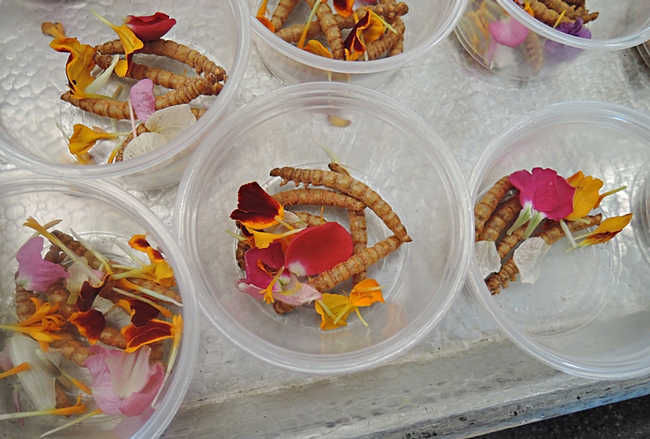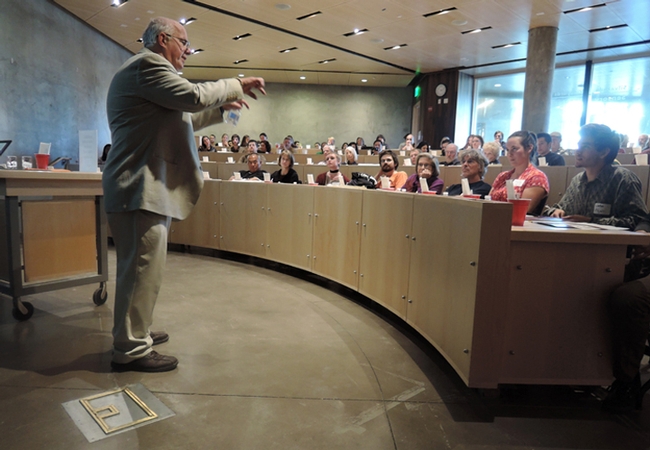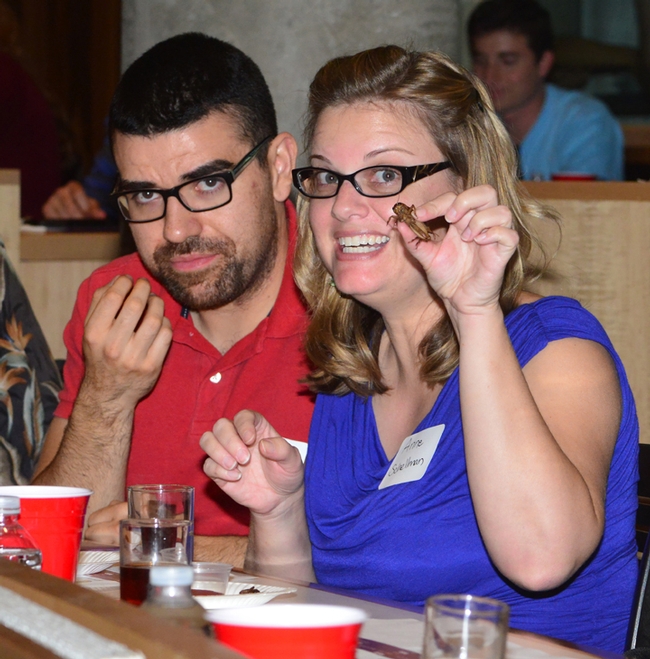
It's cricket to eat Cambodian crickets.
And who wouldn't want a plate of teriyaki grasshopper kebobs paired with Rubicon Angus Scottish Ale?
"Don't worry, be hoppy," said celebrity bug chef David George Gordon, author of the award-winning “Eat-a-Bug” cookbook.
The occasion: the first-ever bugs-and-beer event at the UC Davis Robert Mondavi Institute for Wine and Food Science's Silverado Vineyards Sensory Theatre.
Bring 'em on!
It was a pairing of bugs and beer--bugs selected by Chef Gordon and beer selected by The Pope of Foam” Charlie Bamforth--the Anheuser-Busch Endowed Professor of Malting and Brewing Sciences in the UC Davis Department of Food Science and Technology.
Together they entertained, informed and educated the capacity crowd at the event, titled "Bugs and Beer—Why Crickets and Kölsch Might Be Matches Made in Heaven." The mood was jovial, the insects savory, and the beer delightful.
Which bugs did they pair with beer?
- Flavored mealworms with Ruhstaller Gilt Edge Lager
- Wasabi sago worms with Lagunitas Pils
- Baked European house crickets with Sudwerk Hefeweizen
- Cambodian crickets with Gordon Biersch Winterbock
- Ant and pear salad with Sierra Nevada Boomerang IPA
- Teriyaki grasshopper kebobs with Rubicon Angus Scottish Ale
- Cricket flour cookies with Heretic Chocolate Hazelnut Porter
- Chocolate-dipped chapulines (grasshoppers) with Berryessa Whippersnapper English Mild
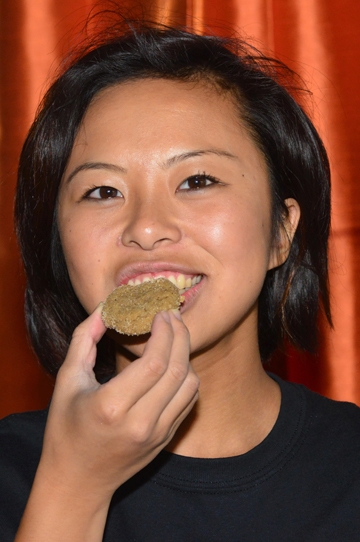
All bugs must be cooked; no bugs should be eaten raw, cautioned Chef Gordon. Why? "Due to the possibility of parasites." He also warned the participants not to catch and eat that cockroach that crawled under your refrigerator or grab a pesticide-sprayed bug in the field. Bugs should be raised in hygienic conditions or purchased from reliable companies.
Chef Gordon said that 80 percent of the world's culture eat bugs, and two-thirds of all animal species are insects. "Bug-eating is good for the planet. Bugs are nutritious, delicious, cheap and plentiful.”
“John the Baptist was the most famous bug eater,” Gordon said. “The Bible tells us he ate locusts and honey. Angelina Jolie is the second most famous bug-eater. And I'm third, the godfather of insect cuisine.”
"Pope of Foam" Professor Bamforth kept the audience laughing with his references to beer preferences, which he boiled down to what people love and what people loathe. Bamforth likened some beers (not served at the event) as reminding him of “cat's breath, newly filled baby diapers, and wet horse blanket with mouse pee.” At one beer tasting, a beer reminded him of “a wet dog urinating in a telephone booth.”
The beer-bug fest was the brainchild of Elizabeth Luu, a UC Davis student-employee at RMI, who told the crowd that she entomophagy. "The more disgusting the bug, the more I want to eat it."
Gordon drew laughter when he said many Americans consider eating bugs "weird" or a novelty but look at the "weird things" that we eat, such as "an egg that comes out of a chicken butt."
RMI program representative Evan White said he especially loved two dishes: the pear-spinach-ant salad “with the crunchy weaver ants” and the dessert, the chocolate-dipped chapuline grasshoppers. “But then anything with chocolate is delicious,” White said.
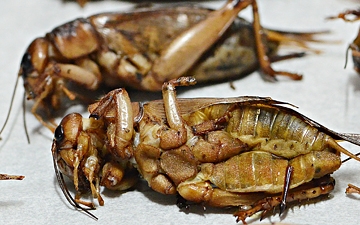
Anne Schellman, manager of the UC Davis California Center for Urban Horticulture who attended with friend Javier Miramontes, a community education specialist for UC Agriculture and Natural Resources in Fresno, said her favorites were the European house crickets and grasshopper kebobs. “They were both chewy but crunchy and had good flavor,” she said.
She wasn't so sure about the Cambodian crickets. “I ate the head and part of the body--after I pulled off the legs and played with the wings,” Schellman said. “It was just too darned big and intimidating to eat it (all).”
Gordon said it's only right that we humans eat the pests that eat our food in our garden. Tomato hornworms, for one. One of his recipes calls for tomato green hornworms, lavished with olive oil, green tomatoes, pepper, white cornmeal and basil.
Gordon mentioned that his “Orthopteran Orzo,” sprinkled with the tasty crunch of three-week old cricket nymphs, is quite popular. At one event, a pre-teen boy kept returning for more. “Don't they ever feed you at home?” Gordon asked him after the fourth helping.
“But this is way better than anything my mom makes,” the boy said.
Attached Images:
